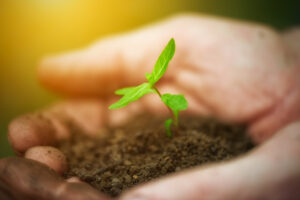Fast forward 5, 10 or even 20 years and how will farm assurance have changed? What will be the best assurance strategies for dealing with known challenges like Brexit and the proposed new Environmental Land Management and Animal Welfare support schemes? What role will new, emerging technologies play in these assurance systems of the future?
While politicians prevaricate and procrastinate, British Food & Farming businesses must continue to plan and invest for the future. As the clock ticks down to 31st October, we can assume that the UK is likely to exit the EU soon. Leaving the EU will expose UK farmers to more intense competition from imports – a situation compounded by a weakening pound – and alter exporting dynamics. However, providing that the Government assists in the creation of a level playing field (at least in terms of agri-food standards and quality) and with the right assurance strategy, farmers can plan to navigate this post-Brexit trading landscape.
UK farmers can’t always compete with cheaper overseas imports on price alone, but they can compete on quality, locality and ethics. Consumer attitudes towards food are changing and people now want total provenance transparency. They need to know where their food has come from and that it is safe and hygienic. They want to know animals have been treated well, that the food they are buying hasn’t involved any slave-labour, that crops are cultivated, and livestock reared with regard for the environment. Social media is providing these consumers with a platform to scrutinise, criticise, praise and share what they are shopping for and eating.
In this context, farm assurance should be viewed as an advantage – a tool for inspiring consumer confidence and for differentiating British produce in an international marketplace – rather than a necessary cost. Assurance needs to be visible to both consumer and producer as it adds value to new and existing products for all links in the food chain. Farmers who may historically have questioned the value of assurance should stick with it and leverage it, for it has the potential to help them grow their business, meet changing consumer expectations and respond to new challenges such as the growing popularity of veganism.
The UK is a world leader in terms of its production standards, and while our farmers have much to be proud of, standards can still be improved. Raising the bar will only be possible if the farming industry harnesses emerging technologies and robust assurance standards.
Blockchain technology has the potential to help in taking the complexity out of authentication and for building databases on which to base predictions for assurance. For example, if a supplier wants to demonstrate full traceability for a gluten-free oat crop, blockchain technology can allow them to use recorded, accurate, randomised data. This would enable the inputs, growth and handling of the oats to be tracked from field to storage. The follow-on to this will be to extend the chain to include processing and manufacturing, adding additional assurance data at each stage.
Satellite technology and imagery is another area with the potential to revolutionise the monitoring, understanding and improvement of farming practices. Advances in image resolution mean that satellite imagery can now reveal meaningful detail in growers’ fields and increases in satellite revisit rates mean that these observations are beginning to be made frequently enough to inform decision-making and feed into assurance systems.
The Environmental Land Management Scheme (ELMS) is a further challenge for farming assurance and another indicator that animal welfare is likely to play an increasingly important part in assurance strategies going forwards. It is highly likely that the Government, via DEFRA, will use assurance as an indicator of farm compliance with the scheme. We can also see that the technology now exists to automate the operation of the scheme – lightening the burden of compliance for farmers and facilitating implementation and policing for the Government.
Assurance is becoming increasingly integral to Government initiatives and policies on agriculture, as illustrated in DEFRA’s new Livestock Information Service (LIS), expected to come into being within the next year or so. This service for checking animal movements electronically identities promises to make the chain of custody easier and more transparent. At present, farmers aren’t required to have assurance throughout the whole farm supply chain but maybe, soon, with the introduction of the LIS, they could work towards meeting a new level of traceability, from birth to slaughter.
Besides the shift to demonstrating assurance throughout an animal’s life cycle, we will also see a trend towards real time assurance – in other words, assurance will transform from a cumbersome task performed once or twice a year when an auditor visits, to a continuously updated, year-round electronic record. Farmers will have apps on their smartphones that enable them to record supporting data on the move, massively reducing the amount of off-line work needed.
Assurance Systems of the Future?
They will be robust and automated – thanks to technological advancements – with a stronger emphasis on traceability and ethical and animal welfare than ever before. Such systems will give UK farmers a robust yet flexible framework for riding out future challenges and using quality standards to add value. Continuous, ‘always-on’ assurance getting more of a real possibility, giving the entire food chain more confidence in provenance and quality than we have ever had before.

